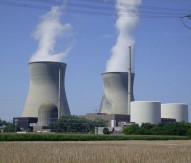
EU-backed fusion energy facility inaugurated
A new cutting-edge plasma physics facility backed by the Horizon 2020 Euratom programme was yesterday inaugurated in Germany.
The Wendelstein7-X ‘stellarator’ was completed at the end of 2015 by the Max-Planck-Institut für Plasmaphysik with a €1bn investment, to which Euratom contributed around 20%, and is intended to reinforce Europe’s leading role in international research on fusion energy.
On the day of the inauguration, which was attended by Research and Innovation Director General Robert-Jan Smits as well as German Chancellor Angela Merkel, the stellarator successfully produced its first hydrogen plasma since operations began in December.
During this process, the containment of the super-hot plasma is achieved via a specially optimised magnetic field produced by a complex array of superconducting coils. This stellarator containment method – in which the magnetic field needed to confine the hot plasma is produced solely by coils external to the fusion plasma – differs from the ‘tokamak’ concept employed at ITER, the world’s largest fusion experiment currently under construction at the Cadarache facility, France.
The stellarator’s completion will enable researchers to investigate, for the first time, the true viability of the stellarator confinement method to complement the research on tokamaks and is considered crucial if Europe is to retain its technological leadership in the field of fusion energy.




